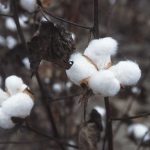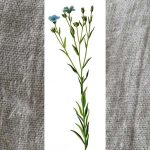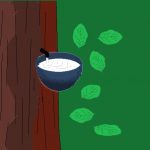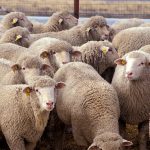



Many producers and sellers label or describe their merchandise as “natural” or “organic” products. “Organic” and “natural” food, clothing, bedding and many other goods are fashionable. Significant numbers of shoppers now ask, “Is it natural? Is it organic?”
Two concerns drive this trend: health and the environment. There is also, for some, a philosophical or religious undertone, a belief that there is an intrinsic value to being as natural or organic as possible. While the last perspective may be considered debatable by many, the first two considerations do have some empirical basis.
Before going on, let’s define natural and organic.
Natural materials are those produced by natural means, as opposed to artificial materials. These may be produced by plants or animals or be naturally ocurring compounds and elements (for example, minerals). For instance, natural fibers include linen (plant), wool (animal) and asbestos (mineral). One fiber used in bedding and clothing is on the borderline between natural and artificial. Rayon is naturally produced cellulose, but it has been extracted and liquified from natural sources and reconstituted as sheets (cellophane) and fiber (rayon/viscose).
Organic is not the same as natural, though it is related. Cotton, for instance, is a natural fiber, but not necessarily organic. Modern cotton farming uses chemical fertilizers and pesticides. Organic farming, whether of cotton or some other crop, is without any applications of chemicals. Being organic extends to the processing of raw materials into finished products without the uses of harmful substances.
There is good reason to be concerned about the impact of what we eat, wear, sleep on or otherwise use on our health. Many things once assumed to be safe have now been found to be detrimental to health, some even deadly. For example, Paris green was a fashionable color for walls. then people with Paris green in their houses became ill, some even dying. The pigments in Paris green contained arsenic, which escaped into the air and poisoned the residents. Now we ban lead-based paint and asbestos because they are health hazards.
Many chemicals used in agriculture and manufacturing are suspected or proven health hazards. Notable are pesticides and fungicides, designed to be deadly to organisms that damage and destroy crops, and chemical fire retardants applied to clothing and bedding. Also suspect are cleaning and bleaching agents and certain fabric dyes and food colorings. Recently added to the list are BPAs used in plastics.
Concern for the environment includes not just the natural ecosystem, but also those who work in the fields, mines and factories, and the communities in which they live and work. Today, for many, this also includes the economies where materials are produced and products made.
The keyword for agriculture is now not just organic, but organic and sustainable. More than how a crop is fertilized and pests are controlled, it is also how agricultural practices treat the land itself. Consumers today want to know how rubber plantations affect the rainforests, how much water is used on the cotton, and whether trees cut for wood used in the foundations are replanted.
This is the easy question. The two sources of natural materials in beds and bedding are plants and animals. These include fibers in the textiles and padding, wood for frames and slats, and oils for foams. It also includes plant-based dyes for fabrics.
Until early in the 20th Century, all fibers used in textiles came from either plants or animals. Even the first man-made fiber was made of cellulose extracted from plants. Plant produced fibers used in beds include cotton, linen (flax), kapok, bamboo fibers, hemp, sisal, ramie, and others. Some of these, such as cotton, come from the seed pods. Linen is from the bast (outer layer) of flax stems. Hemp fiber is from the hemp stem, while coconut fiber comes from the seed itself.
Organic concerns for plant fibers are the fertilizers and pesticides used in growing the plants. For instance, raising cotton uses an extraodinarily large proportion of pesticides and fertilizer compared to other crops. Only in the past two decades has raising cotton organically become economically viable.
With bast fibers, this extends to extraction of the fibers. Traditionally, linen fibers have been extracted from flax stems by retting, letting the stems rot until the fibers are separated. Modern extraction uses acids or enzymes to speed the process. However, disposal of the retting water is a problem.
Bleaching of plant fibers raises environmental concerns, especially with the disposal of liquid waste.
Animal fibers are the oldset used in clothing. Wool seems to be the longest used animal fiber. Other animal fibers used are cashmere and mohair (goat hair), alpaca, angora (rabbit) and silk. All but silk are hairs shorn or combed from the animal. Silk is threads extruded by silk moth caterpillars to make thier cocoons.
Concerns related to animal fibers are care of the animal, pest control and processing the fiber. Does raising the animals damage the land? Are the animals treated humanely?
With wool, are chemicals used to treat the sheep for ticks? How is the wool cleaned after shearing?
In 2013, leaders of clothing companies discussed the environmental impact of their businesses, whether synthetic or natural. The answer was not simple. It was complicated by the raising of cotton, the most widely used natural plant fiber. The same issue is also faced in choices of materials for mattresses, pillows, sheets and blankets.
Organic Trade Association – http://www.ota.com/
Organic.org – http://www.organic.org/articles/showarticle/article-224
NCBI – NIH – http://www.ncbi.nlm.nih.gov/pubmed/10968564
Wkipedia – http://en.wikipedia.org/wiki/Organic_clothing http://en.wikipedia.org/wiki/Natural_fiber
Sustainable Cotton Project – http://www.sustainablecotton.org/
CoolNotCruel – http://www.coolnotcruel.com/
Hemp Industries Association (NA) – www.thehia.org
Natural Life Magazine – http://www.life.ca/naturallife/0406/organic_fibers.htm
Vermont Organic Fiber – http://vtorganicfiber.com/
Eileen Fisher – http://www.eileenfisher.com/EileenFisher/Behind_the_Label/Behind_the_Label/Organic_Fibers.jsp?bmLocale=en_US
Numei – http://www.numei.com/fiber-facts.html
Fabric University | Fabric Seminar | Fiber History – http://www.fabriclink.com/university/history.cfm
This entry was posted on Sunday, February 22nd, 2015 at 7:26 PM and is filed under beds, fabrics, foam, mattresses . You can follow any responses to this entry through the RSS 2.0 feed. You can leave a response, or trackback from your own site.

Get New Post Notification via Email:

10 thoughts on “Natural or Organic?”